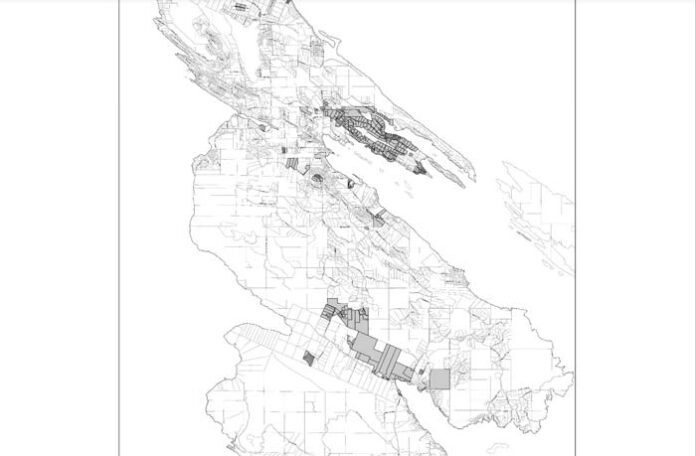Salt Spring’s latest swift-moving effort at allowing some accessory dwelling units (ADUs) on the island has been approved by a senior committee of the Islands Trust, clearing the way for its likely adoption this week.
Bylaw 537’s approval by the Trust’s Executive Committee (EC) Wednesday, Feb. 28 came after Salt Spring’s Local Trust Committee (LTC) held first, second and third readings of the proposal at an online meeting Jan. 22.
It also came on the heels of renewed opposition from representatives of Tsawout First Nation. In a Feb. 2 letter to the EC, Chief Abraham Pelkey expressed Tsawout’s “deep concern and continuing opposition” to the bylaw, as well as frustration with the process — saying they were not consulted or even informed that the Jan. 22 meeting was taking place, nor given time to express opposition before it happened.
“The Salt Spring LTC acted with undue haste,” wrote Pelkey, “and with no opportunity for a public hearing at which we could have submitted our concerns.”
Pelkey noted the Tsawout First Nation has the only reserve on Salt Spring Island at Fulford, land that would “certainly be affected by misguided land-use decisions” nearby.
“Although Bylaw 537, as drafted, has less reach than the previous Bylaw 530, Salt Spring LTC is proposing to enlarge its catchment once it is in force,” states the letter, “by encouraging a program of spot-zoning to add density on demand.”
Pelkey added that by abandoning Bylaw 530 in favour of 537, the LTC did not address the First Nation’s previous concerns; rather, he said, they “simply found a way to scale the bylaw down to pass it,” with an intention to expand the scope later.
Bylaw 537 adds a new map to Salt Spring Island’s planning documents, indicating where ADUs would be allowed — from a land use perspective.
The new map covers essentially everywhere secondary suites are already permitted, except for lands subject to excessive saltwater intrusion and those subject to the existing moratorium on new connections within the North Salt Spring Waterworks District’s service area. The bylaw, according to Trust documents, provides “expanded regulation for secondary suites and provide[s] clear, concise regulations for the construction of ADUs” — saying it “only diversifies the form of already available density” rather than an expansion of use and density.
Salt Spring’s LTC has asked staff to develop a streamlined spot-zoning “pilot project” to allow residents request their properties be added to the map.
“The Salt Spring LTC lobbied us through much of last summer and fall, months after presenting a version of Bylaw 530 that was almost the same as Bylaw 537, and which we could not support,” wrote Pelkey. “They then told us they would sponsor a potlatch to build a relationship for reconciliation, but never did so. Clearly, the Salt Spring LTC did not believe they had addressed our concerns a few months ago. So why should they think so now?”
In unanimously approving the bylaw Feb. 28, trustees noted the EC’s main role was to approve the bylaw — or not — based on whether it was consistent with the Salt Spring Island Official Community Plan (OCP) and the Islands Trust’s own Policy Statement.
“My view is that the consistency with the OCP and the Policy Statement checklist is what the Executive [Committee] needs to be looking at,” said Lasqueti Island trustee Tim Peterson, who also chairs Salt Spring’s LTC. “And that’s indicated in the report as being set up for approval.”
Mayne Island trustee David Maude sought reassurance from staff that Islands Trust had met all its statutory requirements for consultation — that they were not “stepping outside of any boxes,” he said.
“It has had its legal review, so to speak,” said planning services director Stefan Cermak. “And it is well within Salt Spring’s legal purview, as it is [within] EC’s, to proceed.”
Bylaw 537’s Feb. 28 approval also came despite a last-minute appeal for deferral voiced at the meeting by Maxine Leichter, on behalf of island advocacy group Keep Salt Spring Sustainable (KSSS).
Among other concerns, KSSS had said it believed — contrary to Islands Trust staff — that Bylaw 537 was not consistent with the island’s OCP and therefore was not eligible for the process that gave LTC discretion to not hold a public hearing.
Salt Spring’s LTC will meet on Thursday, March 7 to consider adopting the new bylaw.

